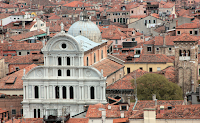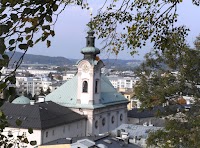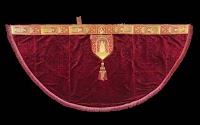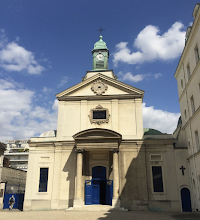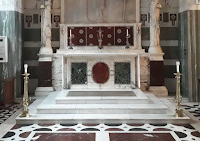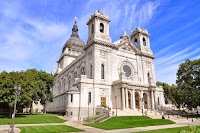 Typically when you think of "choir screens," you will either think of a straight wall like feature separating the chancel from the nave, or in some instances a rectangular one. Today, I wanted to show you something a little bit different and rather more rare. It c…
Typically when you think of "choir screens," you will either think of a straight wall like feature separating the chancel from the nave, or in some instances a rectangular one. Today, I wanted to show you something a little bit different and rather more rare. It c…
Our Advertising Partners
-
The global pandemic has disrupted the normal celebration of the Holy Week in Spain, where, for a second year, the government has forbidden t...
-
We live in a very visual, image-based culture and, what's more, there is always lots of curiosity around the matter of traditional papal...
-
Above is an image of Pope John XXIII after his death in 1963, dressed in red vestments for burial (the arms on the front of the chasuble app...
-
The mitre is one of the most recognizable symbols of prelates of the Church, specifically of bishops up to the Roman pontiff himself -- thou...
-
The papal blessing known as the Benedictio Coram Populo, or more commonly as the Urbi et Orbi (to the city [of Rome] and to the world) bless...
-
To the person who simply enjoys beautiful art and architecture, distinctions like "baroque" or "rococo" might seem overl...
Blog Archive
-
▼
2023
(257)
-
▼
September
(21)
- The Tornacoro: The Semi-Circular Screen of the Duo...
- St. John's Abbey Church in Collegeville, Minnesota
- Churches of Venice: San Zaccaria
- Authentic Inculturation: The Oriental, Sino-Christ...
- Festal Chasubles from Seventeenth and Eighteenth C...
- Peruvian Splendour: Vestments from Lima, Peru
- More Sicilian Baroque: The Chiesa di Santa Caterin...
- Salzburg's St. Sebastian (Sebastianskirche)
- The Venetian Cope of Gandino
- Famous Daprato Altars: Church of St. Agnes (Archdi...
- The History, Forms and Symbolism of the Crosier
- Tiaras of the Popes: Three Tiaras of Pope Pius IX
- Chapelle de Picpus in Paris (Notre-Dame-de-la-Paix)
- The Church of Hosios Loukas in Greece: Exploring A...
- Centre of Liturgical Arts: L'Eglise Saint-Just de ...
- The Sacred Belt of Our Lady (Cathedral of Prato, I...
- How to Simply Achieve Noble Beauty, Simplicity and...
- America's First Basilica: The Basilica of St. Mary...
- Pontifical Vestments of a Late Eighteenth Century ...
- The Resplendent Baroque High Altar of Saint-Bruno ...
- The Romanesque Basilica of the Abbey of San Giovan...
-
▼
September
(21)
Donate
Copyright ©
Liturgical Arts Journal | Powered by Blogger













